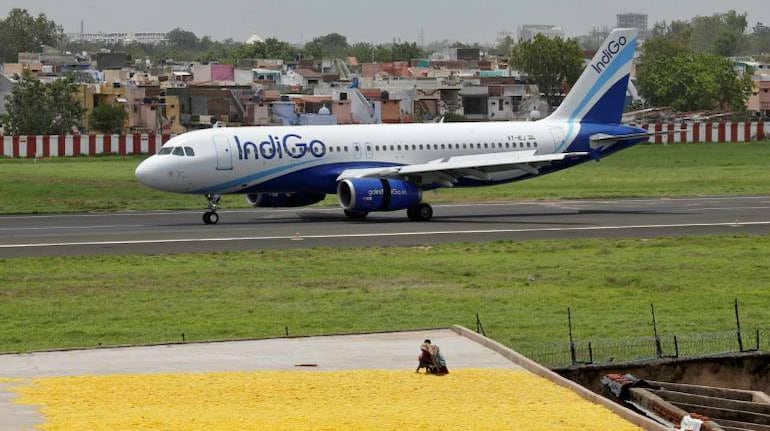



IndiGo has often been credited for having a sharp focus on costs. Over the years, when the airline unleashed its scale to take on the competition, the airline always said that it doesn’t dump capacity and instead grows where it sees opportunity. More often than not, this opportunity of IndiGo ended up decimating the competition.
It was the second half of 2009, Kingfisher Airlines wasn’t in the best of financial health and IndiGo was inducting an aircraft a quarter and not an aircraft a month. Kingfisher Airlines withdrew one of its three Delhi-Kolkata flights, a popular route. Within days, IndiGo filled that void. The airline also started bagging lucrative night parking slots wherever Kingfisher vacated.
Also Read | Even IndiGo’s best revenue performance couldn’t help it make profits. What will?
In 2014, AirAsia India entered India with much fanfare. The new airline tried reinventing the business by adding non-stop flights that were hitherto one-stop. This included flights to Chandigarh from Bengaluru. IndiGo quickly launched in the sector and added capacity on the Bengaluru-Kochi and Bengaluru-Goa routes. The game of one-upmanship has continued between the two airlines on the Bengaluru-Kochi route even as AirAsia vacated the Bengaluru-Chandigarh market altogether.
Cut to 2022. Akasa Air is to start operations next week. The airline announced its first routes from Mumbai and Bengaluru. Its baffling choice was jumping into the Bengaluru-Kochi route and Mumbai-Ahmedabad. The response? Within hours of the route announcement, IndiGo had added one more flight between Bengaluru and Kochi and increased frequency between Mumbai and Ahmedabad.
From 2009 to 2014 and now 2022, one thing has remained common—trying everything it can to push the competition into a corner. Since 2006, IndiGo has fought rivals slot by slot, flight by flight and sector by sector. As it nears the 300-aircraft mark, it is now even easier to do that than in the past!
Low-cost carriers are not the only ones it chased. On June 23, 2016, Vistara announced the launch of Port Blair as its new station with flights from September 30. IndiGo launched its first flight to Port Blair on September 28, two days before Vistara‘s. The only routes that have remained immune have been those under the Regional Connectivity Scheme, where fares and frequencies are mandated by law.
From being ambitious to even audacious, the airline has come a long way in its 16-year history. There are two things it has kept a close eye on—competition and fleet renewal. While fleet renewal has been an ongoing process with even the first of A320neos being returned to the lessor and the entire fleet of A320ceos expected to be out in another two quarters, taking on the competition is dynamic and not completely within the control of an airline.
Chasing competition—how and why?
IndiGo is uniquely placed to take on the competition. Unlike sectors like retail or hospitality where it takes time to set up shop near the competition, for airlines it is much easier.
As IndiGo takes on Akasa Air, the first item on the agenda has been checked—which is adding capacity. What is next? Dropping fares, which also has been done now. What is different right now? The fare caps mandated by the government do not let an airline drop fares for a rolling 15-day period, so the cheaper fares are available 16th day onwards, unlike in the past when fares dropped so low that travelling by bus was relatively more expensive!
But how does it work for IndiGo? The airline operated 1,466 daily flights in May on average. When the airline drops fares for flights that fly around when competitors operate their flights, it may have an impact on revenue for two or three of its flights. Do it on a couple of sectors, it will still be no more than 10 flights. That would mean 0.68 percent of its total flights being impacted by low fares. But for the newly launched competition, it could well mean that 100 percent of its flights are under pressure! Something which AirAsia India faced right from its first flight.
The eventual aim of any airline the size of IndiGo across the world is to edge out competition and make them vacate markets after which the airline can price itself higher and make steady profits!
Headwinds?
The slot positions at airports have changed rapidly. Airports may not have as much spare capacity to let IndiGo add flights closer to competitors’ timings. Adding capacity on metro routes also means that the airline will have to fly more to the northeast and Jammu and Kashmir to fulfil the mandatory Route Dispersal Guidelines.
The airline has also been at the receiving end from employees. Letting go of certain sections of the workforce, salary issues and more are probably visible on the ground. The famed On Time Performance is no more the talk of the town. Has the Ground Force lost the vim it once had? Can the airline continue working as a team and show the zeal its backroom boys show towards rivals? Jet Airways started faltering from its course when it was around this age. It found it hard to come out of the 2008 economic slump. How will it be for IndiGo?
Discover the latest Business News, Sensex, and Nifty updates. Obtain Personal Finance insights, tax queries, and expert opinions on Moneycontrol or download the Moneycontrol App to stay updated!
Find the best of Al News in one place, specially curated for you every weekend.
Stay on top of the latest tech trends and biggest startup news.